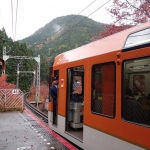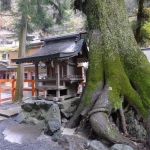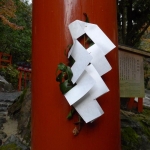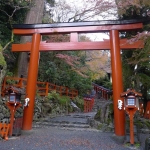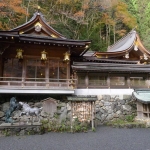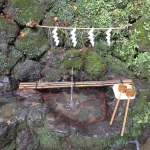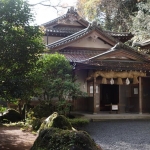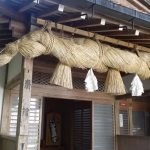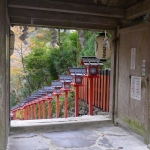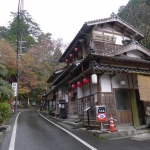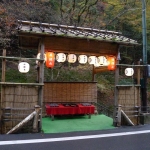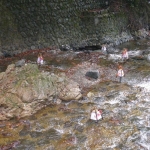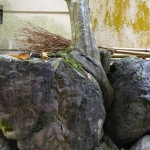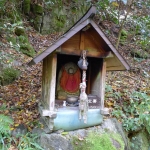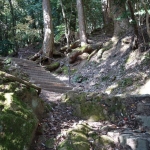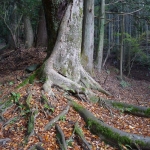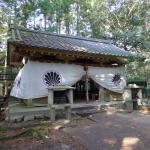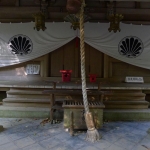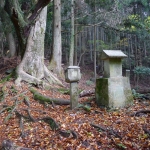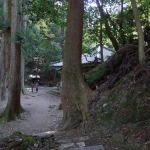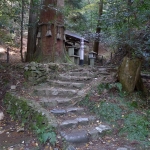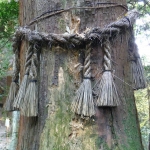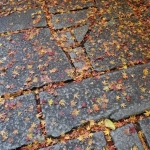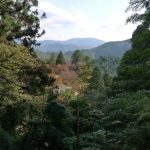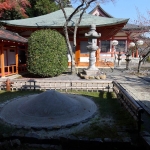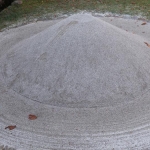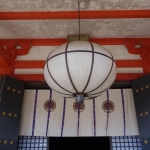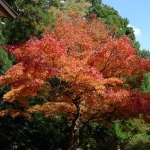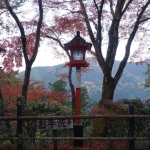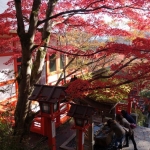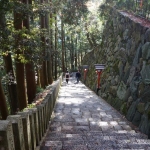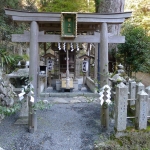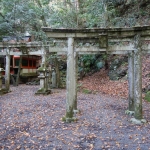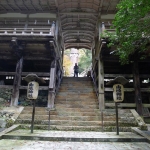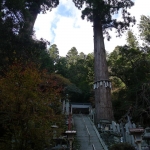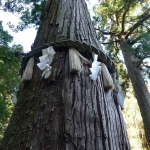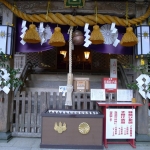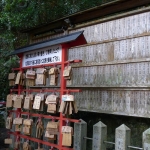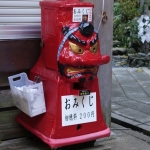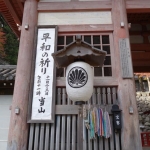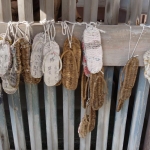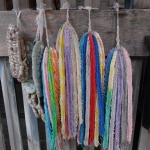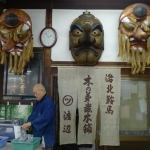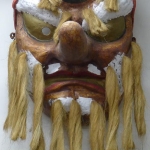Kurama – Kibune
The month’s last night, moonless––
a thousand-year-old cedar
embraced by the storm
–Bashō
Red: Places of Interest Blue: Eat Green: Sleep
Take the Keihan Line to the northernmost stop, Demachiyanagi Station, and switch to the Eizan Line. Be careful to board a Kurama-bound train as some trains on this line go to Yase instead.
https://www.alltrails.com/trail/japan/kyoto/kurama-trail
The oddly shaped trees and some secluded small temples on top of the mountain create a truly mysterious atmosphere which can be experienced most vividly when you hike in the early morning or in the late afternoon.
For those who begin the hike from Kurama, the hiking trail starts behind the main building of Kurama Temple.
After a steep climb, you will find Yoshitsune Sekurabe-ishi (Height Comparing Rock) to your right.
Legendary samurai fighter Minamoto Yoshitsune of the Minamoto Clan in Japan’s 12th century is said to have measured his height here while, according to legend, training martial arts with Sōjōbō.
From there a trail leads off to the left. It is called Kinone-sando (Tree Root Path) which leads to Osugi-gongen, the very place where Reiki founder Usui Mikao is said to have fasted and meditated for 21 days before he was given the revelation of Reiki.
Reiki, a hands-on energy healing method, has become a popular alternative therapy these days, not only in Japan but also in the US and in Europe.
While pondering all the legends surrounding this area, be careful not to stumble over the many tangled roots of old cedar trees covering some parts of the path.
From Osugi-gongen make your way back to Yoshihitsune Sekurabe-ishi from where the main trail continues.
Soon you will come to Sojo-ga-dani Fudo-do (Fudo Hall in Sojo Valley) and further down the trail you will reach Oku-no-in Mao-den (Mao Inner Sanctuary).
The Fudo Temple is dedicated to Fudo-myoo, one of the Five Wisdom Kings who are the guardians of esoteric Buddhism in Japan. Being a guardian, he spots an angry face, a sword in his right and a rope in his left hand.
The Mao Temple is dedicated to Maoson no kami, a deity said to have descended to Earth from Venus some six million years ago.
There is a legend that a meteorite from Venus fell to earth in Japan breaking off in three parts. One part is said to have landed in the Kurama Mountains.
From the Mao Temple you will be descending the mountain but not before coming across yet another old tree and its tangled branches. This time it is an old fuji (Japanese wisteria tree).
After crossing a small bridge at the end of the trail, you will be in Kibune Village. Turning right, you can visit Kibune Shrine. Turning left and walking down the road, you pass by some restaurants and Japanese-style inns.
There are a number of inns in Kibune where you can stay overnight after a delightful dinner in one of the lantern-lit river-platform restaurants.
These restaurants are called Kawadoko and you literally sit on platforms suspended just above the waters of the river.
They serve a variety of fish dishes but the summer treat to go for here is nagashi somen, some thin noodle served cold.
In the Kurama Mountains the temperature is a few degrees less than in Kyoto in summer and there blows a fresh air. The rippling sound of water from the stream over which the platforms are built also seems to contribute to the cooling effect.
I preferred to get off at the Kibune-guchi station, have a stroll through the village of Kibune and then lunch before hiking over the mountain to Kurama. It was a wonderful fall day with people encouraging me along the mountain trail.
Just a thirty-minute ride on the Eizan Dentetsu train line from Demachiyanagi Station is some of the best hiking in the Kyoto area. The area is not just beautiful but mysterious and redolent with history.
Alighting at Kibune-guchi Station, you will walk about 20-minutes up a two-lane mountain road until you come to the village of Kibune (“yellow boat”). The walk is quiet and peaceful – except for passing cars that you are sharing the road with – as cedar trees tower over you on both sides. There is bus service from the station to near the village, but it is infrequent. I waited a short time with others and caught the bus into town.
Once in the town you will see inns on both sides of the road.
Kifune Shrine or Kibune Shrine (the shrine was called “Kifune” though the area name is “Kibune” – many people now refer to the shrine as “Kibune- jinja”) is on the left and up a lantern-lined stone path. Kifune Shrine is free and worth seeing. It has an unusual black torii gate rather than the usual vermilion color.
Kifune Shrine is associated with the god of water as it is believed a goddess traveled all the way to the spot by yellow boat (ki+bune), hence the name of the village. Businesses associated with water in the cooking industry such as restaurants and food producers come here to pray for success. The shrine is also associated with the god of marriage and attracts young couples.
After you have seen Kifune Shrine, retrace your steps back to a red bridge. It will be on your left (on your right as you entered the village). After crossing the bridge, there is a small hut where you will need to pay a 200 yen mountain climbing fee.
The first several hundred meters are fairly steep. Shortly beyond this, you will come to an open area full of cedar roots – one of the highlights of the hike – and the walk becomes easier.
It is in these mountains that the two-meter tall Benkei is thought to have trained. Benkei (1155 – 1189) is best known for his exploits at Kyoto’s Gojo Bridge, just south of downtown. Here he fought and defeated 999 passing samurai, taking their swords.
In his 1000th duel, however, he was defeated by Minamoto no Yoshitsune, the son of warlord Minamoto no Yoshitomo. Following his defeat, Benkei became Yoshitsune’s retainer and fought together with him.
End the hike with a hot spring bath in Kurama


